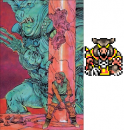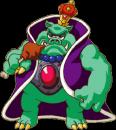And while I understand that FSA preceding ALttP on the Child timeline makes sense now, it wasn't even on the table back in '98. The singular timeline they were working with would still need OoT to directly precede ALttP for the plot of ALttP to make any sense. With no games on the child timeline between OoT and ALttP, the events of the ALttP backstory could never happen.
This is one of the main problems with trying to argue about older games. It's apparent that the timeline was just a nebulous idea until Aonuma came in. Miyamoto worked in "broad strokes" and didn't really care what order the games went in. Aonuma was the one to split the timeline and created the relatively cohesive storyline links between all of the 3D games.
I hear what you are saying, and I agree - It's very apparent that Miyamoto/Aonuma were working with a singular timeline (Or even NO timeline) until at least TWW. However, I am not at all convinced that the writers of OoT, Osawa/Tanabe, were also.
My point is just this: Osawa/Tanabe created a "split" ending for OoT. they created a Child ending, and an Adult ending. They must have had a reason. No doubt they did have one. If you believe it was just so MM could happen, I might buy that, but again was MM conceived as far back as when OoT was being written?
I only theorize that there may have been another reason that they (Again, the writers - Osawa/Tanabe) crafted a "split" ending - And that it could have been so the other Zelda games (LoZ, ALttP) could fit together, in some logical way, and make sense. I see LoZ in the Adult and ALttP in the Child making the most sense.
If I am dead wrong, then why did the writers create the "split" ending to the OoT story? What was the purpose of a non-linear ending?
Edited by KJ Contrarian, 03 October 2009 - 07:46 AM.

















